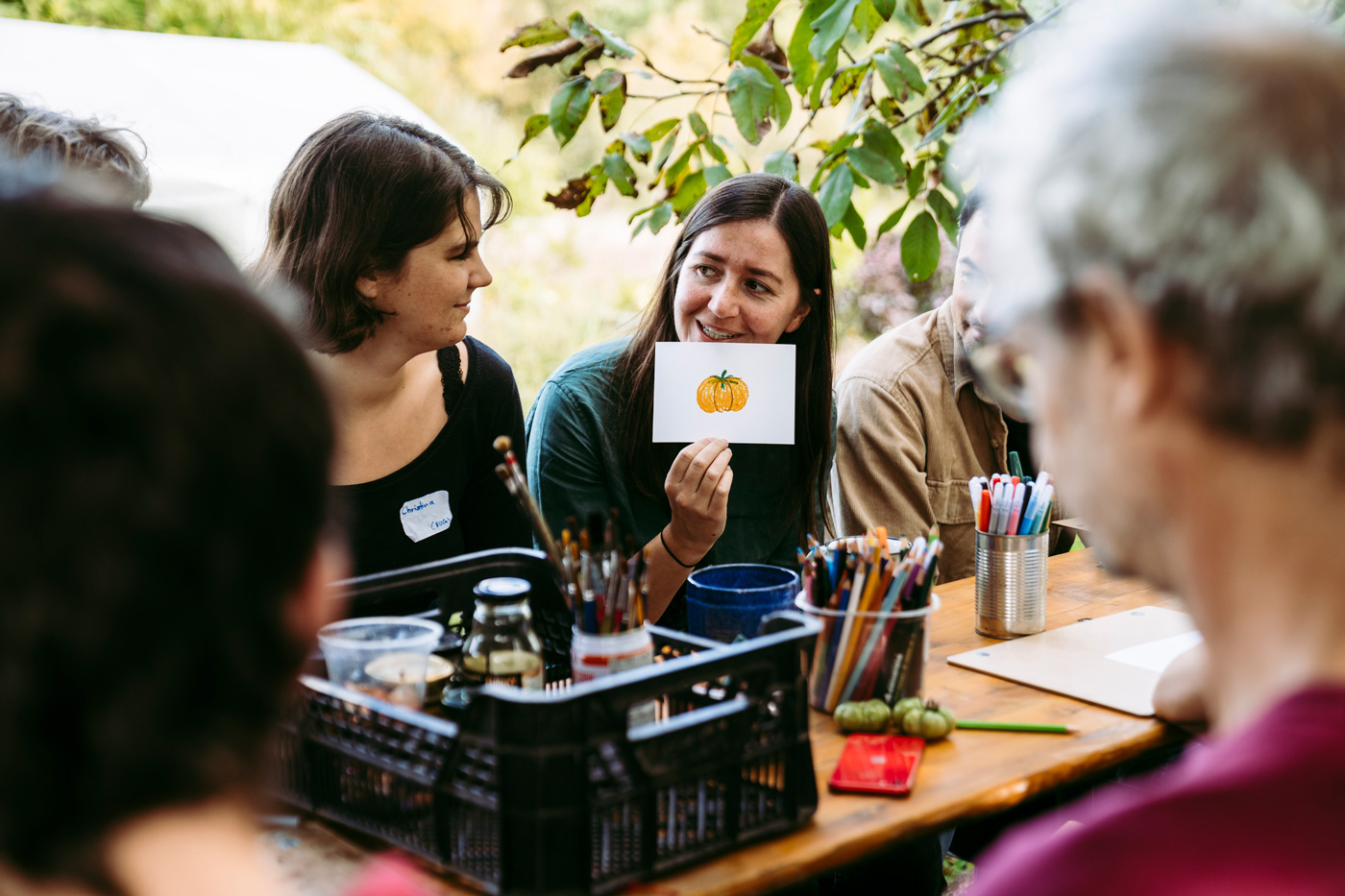Workshop Structure
1. Participants first task is to draw something they like or find appealing. If outside, participants can walk around the space observing and listening to nature until they find something to draw or paint. Participants can take the sketch books with them and draw at any location within the outside space or be seated around a table if they prefer. If indoors, allow participants time to familiarising themselves with the nature pieces available, and then draw or paint their selected piece. In the PLANET4B session, participants were given 10 minutes to conduct their first drawing, however this could be extended depending on the requirements of the group.
2. After everyone has completed their first drawing, bring the group back together and give participants an opportunity to share their drawings and discuss why they chose their subject and what they liked about it. Participants might wish to show their drawings to the group, however this is not necessary.

3. After the first drawing exercise and discussion round is complete, repeat the process adjusting the prompt for the drawing. Potential prompts include:
- Find something you don’t like or find something that disgusts you?
- Find something that intrigues you – What draws your attention? Why?
- Find something that is out of place – How does it contrast with its surroundings?
- Find something that has changed over time – How might it have looked in the past? How might it change in the future?
- Find something overlooked or ignored – Why do people tend to miss it? What happens when you focus on it?
- Find a texture – How does it feel? How would you translate that into drawing?
- Find something decaying – What is its role in the ecosystem?
- Find something that has been shaped by humans – How has human interaction altered it?
- Find something that creates a sound – What does it sound like? Can you represent this visually?
As an alternative to feedback discussion sessions, offer a quiet reflection time instead, where you give people the same questions the facilitator asks the group, but give them the chance to journal or think about it in private
4. To close the session – bring people back together, the closing discussion could address:
a. Observations and Discoveries – What stood out to you during the workshop? Did anything surprise you?
b. Challenges and Insights – What was difficult about the process? Did it make you think about anything differently?
c. Emotional and Sensory Responses – How did different elements of the environment (if working outdoors) make you feel? Did anything provoke a strong reaction?
d. Storytelling through Drawing – What narratives can be drawn from the images created?
e. The Role of Art in Engagement – How can drawing be used to explore environmental or social issues?




















